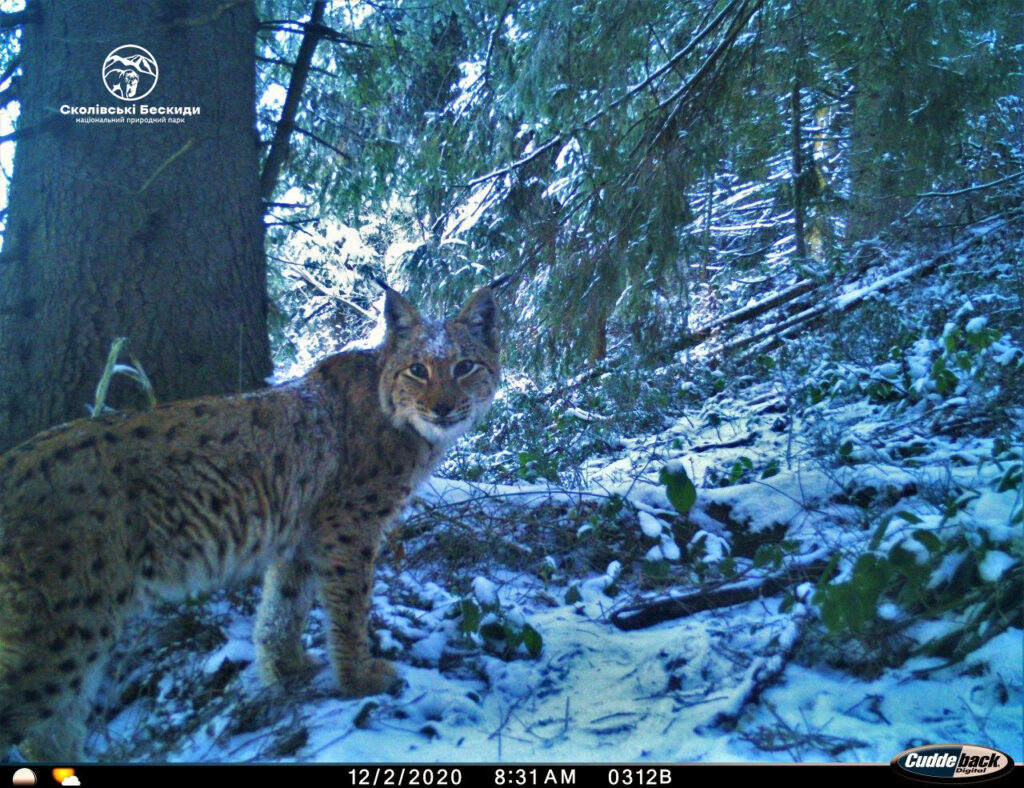Systematic camera trap surveys are done all over Europe for lynx, but these have not been done everywhere, leaving gaps in our knowledge. In Ukraine, some attempts have been made to calculate lynx densities, but these methods often lack strong statistical support.
Researchers of the Frankfurt Zoological Society conducted the first spatially-explicit capture-recapture of lynx using camera traps. Nearly 3 years of work, 100s of camera traps, 100,000s of camera trap photos, and dozens of specialists were needed to make this happen.
This type of monitoring is possible because lynx have unique, individual coat patterns (like a human fingerprint). The results showed that lynx density in Ukraine and Belarus was low but quite similar to other areas in Europe, which still shows the importance of these areas for lynx. In the Carpathians, this is especially important, because the Ukrainian Carpathians connect the lynx populations in Romania to Poland and Slovakia.
The analysis and results of the research will help the IUCN (International Union for Conservation of Nature), which compiles the global “Red List”, that reports the overall status of lynx conservation in Europe.
